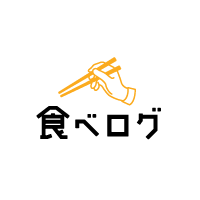My Gripe with the Ranking System of Tabelog
https://tabelog.com
I, along with millions of other residents of Japan, rely heavily on tabelog.com as a resource for finding restaurants across the country. With so many restaurants in such a small city, I find myself logging in constantly to see where I should go for dates, quick bites, or client meetings. Japan actually leads the world in number of restaurants per person with one restaurant for every 266 people. In total there are 474,048 restaurants in Japan and tabelog.com probably has a review page for each one (http://www.ageekinjapan.com/474048-restaurants-in-japan/). When I first started venturing around ramen shops in Tokyo, I primarily sorted ramen by ranking on tabelog to see what the highest rated shops were. However, after eating hundreds of bowls of ramen, I quickly realized that the rankings can sometimes be a little misleading. Its reviews are sometimes a bit skewed, by no fault of tabelog themselves, and seem to impact restaurants greatly.
My biggest gripe with the rating system is that I believe it follows the Argumentum ad populum theory. According to wikipedia, the argumentum ad populum (Latin for "argument to the people") is a fallacious argument that concludes that a proposition must be true because many or most people believe it, often concisely encapsulated as: "If many believe so, it is so." (https://en.wikipedia.org/wiki/Argumentum_ad_populum) Reviews on tabelog are more often than not viewed by Japanese foodies looking for top restaurants across the country. Ramen is no different in that the restaurants that top that list have hundreds of reviews from people traveling or taking days off to try the restaurant based on its reputation on the site itself. What tends to happen next is why I think of this as an Argumentum ad populum. The reviews typically start off as “upon the recommendations from tabelog reviews” or “just as other reviewers have said…” without giving much personal input on the restaurant itself. Maybe Japanese people don’t like straying from the masses, but the reviews tend to be positive and similar to other past reviews. It feels like customers come in to the shop with a preconceived positive assessment based purely on what reviews on the site have said. This leads to even more positive reviews for already high ranking restaurants which then leads to these restaurants staying at the top of the lists.
https://sheepforcomics.wordpress.com/2014/08/12/argumentum-ad-populum/
For example, if you sort by ranking on tabelog for ramen, the top 20 restaurants have well over 400 reviews with Itto, the number one restaurant, having over 1000. Now, don’t get me wrong, majority of these ramen restaurants are fantastic and I highly recommend a visit to most, but I find it interesting that the top 20 restaurants on the list have well over 400 reviews, but the next 20 barely have over 100. What I found is that tabelog’s ranking system makes it so that only 20 restaurants appear on the list and therefore these are the only places a majority of the restaurant goers end up dining at. Then of course, there’s the Argumentum ad populum style reviews in which most will just agree with other popular reviews and score the restaurant high, which help keep them at the top.
Again, I have no problems with any of the restaurants in the top 20. I have already reviewed a handful of these restaurants and recommend a visit to most, but by basing your ramen shop visits according to tabelog restricts you from trying so many other fantastic restaurants around Japan. Well deserving ramen shops struggle to keep up as customers keep going to the restaurants that occupy the top 20. A huge part of my reason to start this website is to give those restaurants serving fantastic ramen a fair assessment, especially for foreigners and tourists who might not be able to read Japanese.
A solution I would love to see is for tabelog to have different sorting methods. For example, instead of ranking purely based on its rating, a ranking based on recent reviews would help give variety in a very structured and rigid list. It would give new and up coming restaurants a fair chance of being visited by ramen goers. As most of the reviews of restaurants in the 20-40 range is quite high, I would assume that more reviews would help boost them in to the top spots in future rankings.
https://ramendb.supleks.jp/
Lastly, and this is more a personal gripe than anything that tabelog can control, but most people who leave reviews on tabelog are casual restaurant diners. A lot of positive reviews don’t particularly describe the ramen, but just claim it was delicious and fantastic. If there were more reviews from ramen connoisseurs, I feel like the list would be vastly different. When you compare the ramen rankings from tabelog to ramen specific rankings like ramendb you’ll see what I’m talking about. Of course Itto will remain near the top, but some of the other restaurants on tabelog are no where to be seen. Ramendb has come up with a nice algorithm that bases its ranking on the weight of recent reviews than reviews overall so I feel like its a better representation of the current state of ramen rather than a more historical outlook on tabelog.
While some of you may not care, if you’ve come this far you cared enough to read this entire editorial. So I hope that in some way I have convinced you to get out of the comfort zone that is the tabelog top 20. Japan, and Tokyo specifically, has hundreds of amazing ramen restaurants waiting for you to try. Be adventurous next time you’re on the look out for ramen and if you discover something new, leave your raving review. Hopefully then we can see a change in the rigid tabelog sytem.


